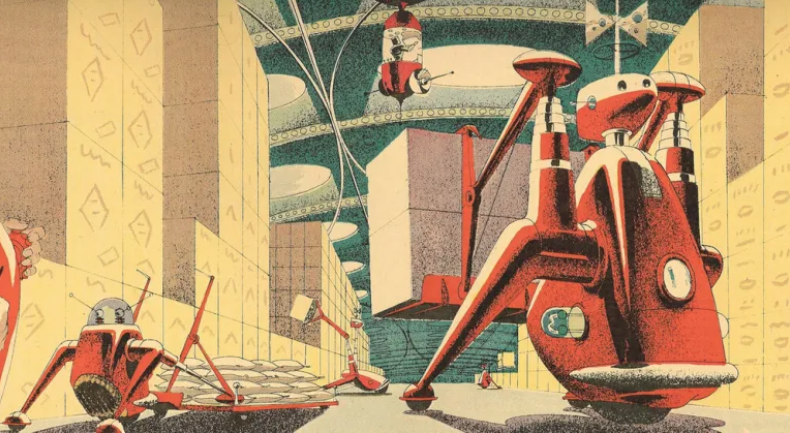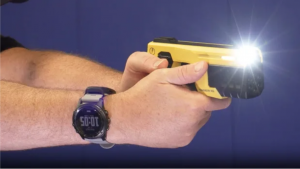Inside the Australian warehouses with robotic workers

Amazon’s new Sydney distribution warehouse spans over 200,000 square metres, across four levels, and is filled with a sea of AI robots picking hundreds of thousands of orders.
The largest warehouse ever built in Australia officially opened late last year.
It spans 200,000 square metres across four levels – about the land mass of Taronga Zoo – and can house up to 20 million of the smaller items sold on Amazon.com.au including jewellery, books, electronics, pantry items and toys.
But there is something different about this warehouse.
It is a warehouse that uses a robot army to pick, pack and sort orders, allowing Amazon to dominate the retail market.

Photo: Amazon
Inside, the warehouse is equipped with cutting-edge AI technology, including yellow robotic drivers that work as Amazon stock pickers — moving pods of inventory and ‘helping to slash the delivery time for new orders’.
An Amazon Australia employee explains how this process works in the video below:
Robotic drives work collaboratively with Amazon team members by moving pods of inventory to them all by themselves.
Amazon’s scale is unrivalled, and the “marching army” are able use AI to direct themselves through warehouses and change their course of direction, while understanding tasks needed to be done and the perimeters in regards to other robots.
Listen to how this is done according to the main facility in Boston U.S. that develops the technology:
Yes, they “graduate” machines from the “nursery” and see them as developing children.
The robotic drivers can lift as much as 680 kilograms of inventory stored in the pods, of which there are 30,000 in the Sydney facility, primarily using QR codes to navigate the shelving system.
In total, Amazon now has over 500,000 robots in warehouses across the world.
 Amazon entered Australia in late 2017 to the fear of many local retailers that lagged in terms of online and digital investment.And when they scale up to robotics, it means more job loses for human employees.
Amazon entered Australia in late 2017 to the fear of many local retailers that lagged in terms of online and digital investment.And when they scale up to robotics, it means more job loses for human employees.
Amazon, just last month, said it will cut another 9000 jobs in its second major staff cull this year.
In January, it made 18,000 workers redundant.
 The robotic replacement.And it’s not like they can’t afford to keep them on, either.
The robotic replacement.And it’s not like they can’t afford to keep them on, either.
Amazon Australia had a strong 2022, with reported revenue rising 50 per cent year-on-year, surpassing $2.6 billion.
Big conglomerates that first sucked up all the jobs, only now to
Only engineers and system developers will prosper in these new AI environments, as human packers dwindle.
As soon as they can find a way to make robots pack the items together, we could see even more loses.
 But Amazon are not the only ones here in Australia switching to automated workforces.Other major companies are also joining the move to robotic warehouses.
But Amazon are not the only ones here in Australia switching to automated workforces.Other major companies are also joining the move to robotic warehouses.
THE ROBOTIC FUTURE
While Amazon may be doing it the biggest, they are not alone in the quest for robotic workforces.
Myer’s new national distribution centre, for example, features more than 200 autonomous mobile robots (AMRs).
This includes three different AMR technologies: The Geek+ RS8 Shuttle, P800s, and Körber’s sortation solution.
Technology at the site includes pedestal sorters that arrange products by store and/or carrier for cross dock, store replenishment and online orders. It handles over 70% of online orders for Myer.
The design of the NDC includes water harvesting and recycling, LED lighting throughout the warehouse and offices, energy efficient fittings, water saving taps, the use of sustainable materials and more.
Mainstream supermarkets have been doing this as well.
Woolworths was first to announce their transition to automation in April 2018, revealing a new $215 million fully automated facility that they said is“…the biggest and most advanced automated distribution centre in the southern hemisphere.”
 Which it was, before Amazon come in.The Woolworths Group released a promotional video on their Melbourne robotics facility at the time:
Which it was, before Amazon come in.The Woolworths Group released a promotional video on their Melbourne robotics facility at the time:
In 2019, Coles also announced plans this week to build new automated warehouses (valued at close to $1 billion), overseen by an “electronic robot workforce”.
Source:https://tottnews.com/2023/04/10/amazon-robot-warehouse-sydney/










Re Woollies automated pallet picking and shipping, I can see clearly into a future where only foods and drinks that pack into square cartons or uniform cans, etc will be available – in short, artificial or highly processed fake foods.
How would robots handle fresh fruit and vegetables?